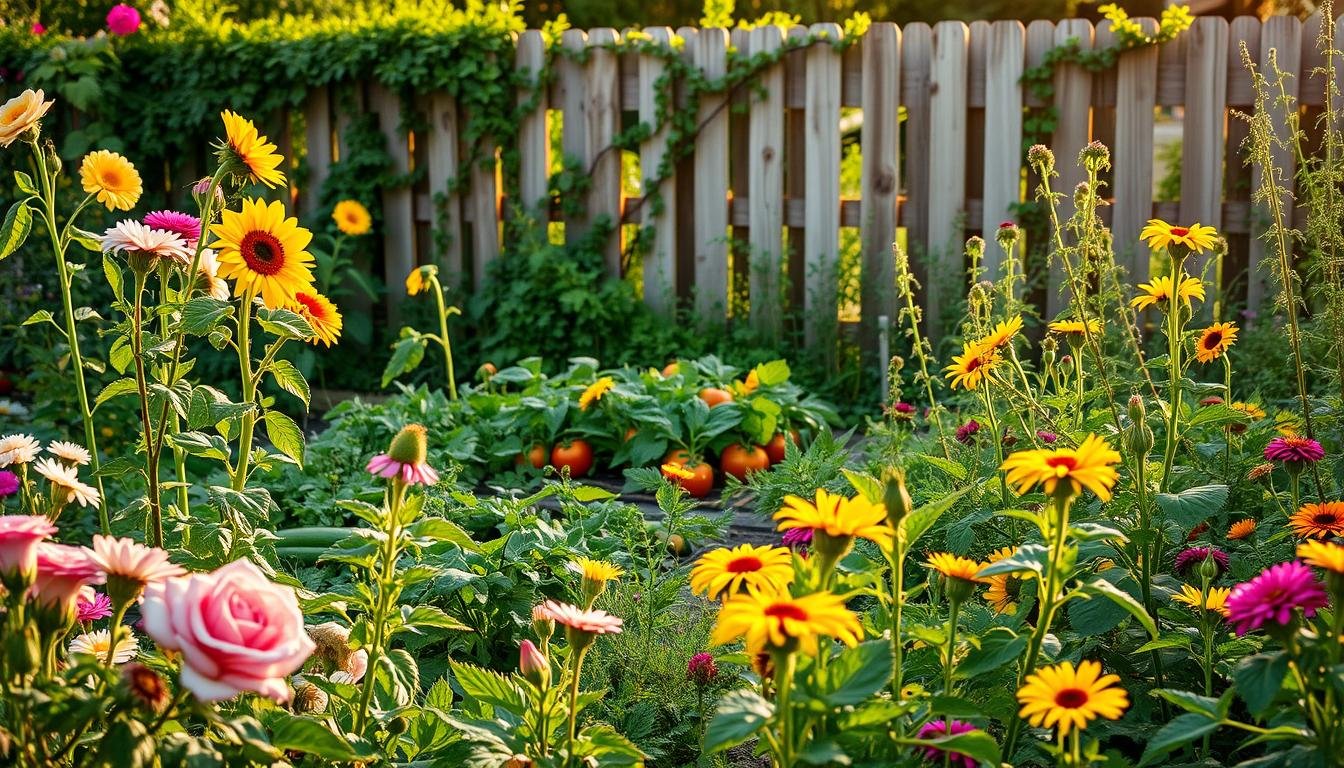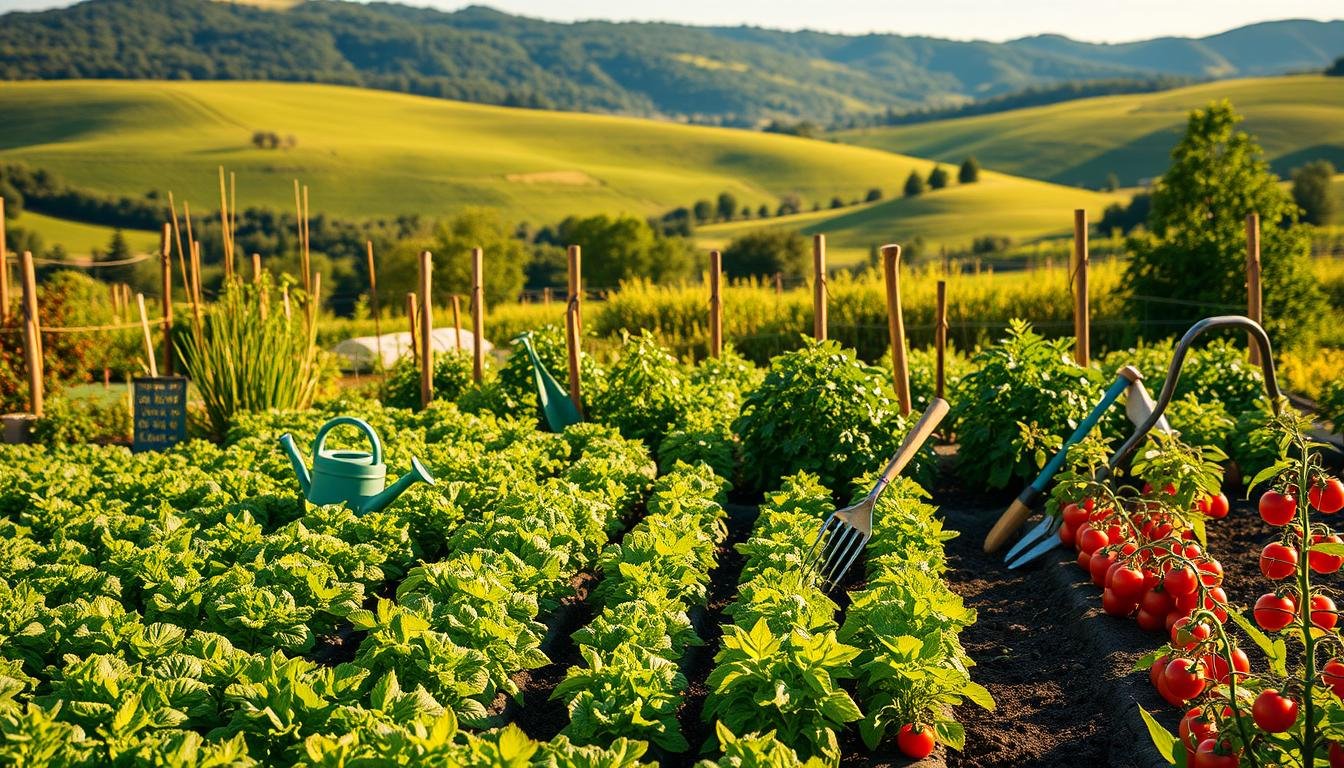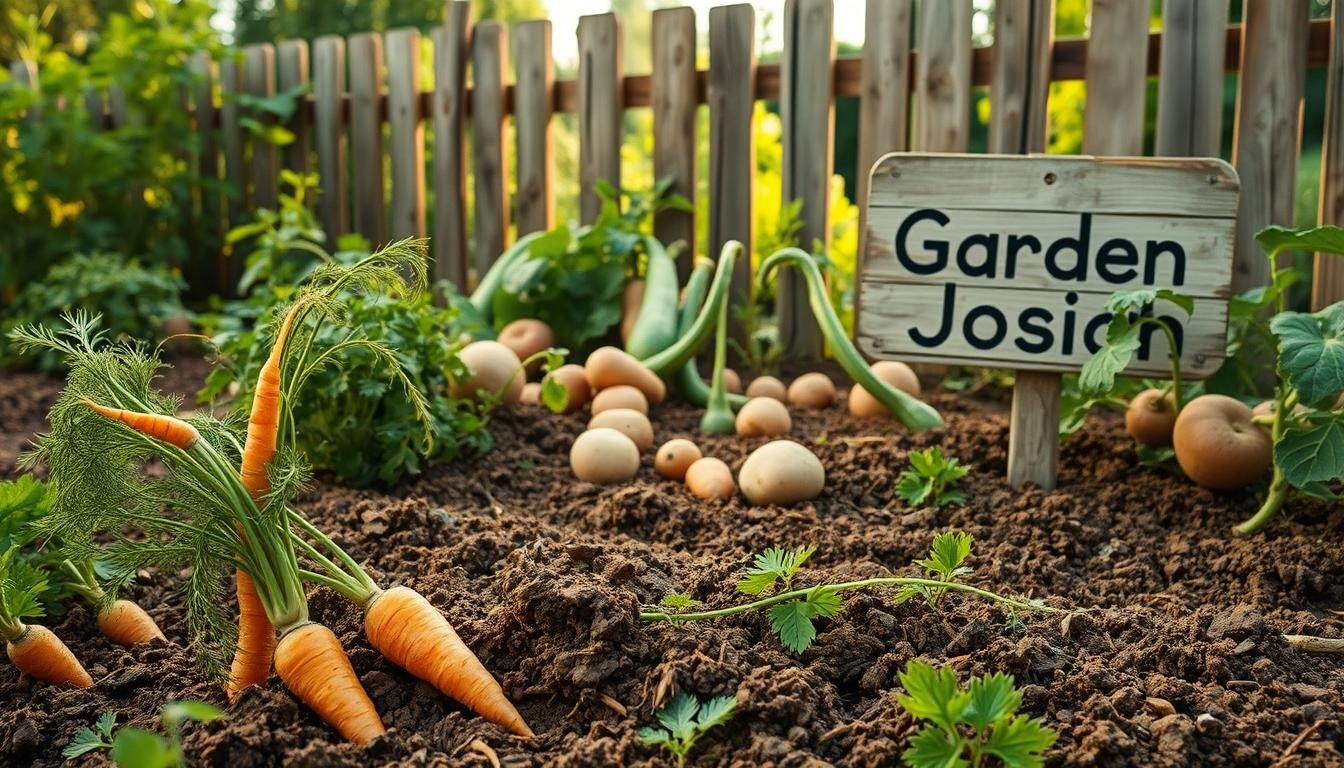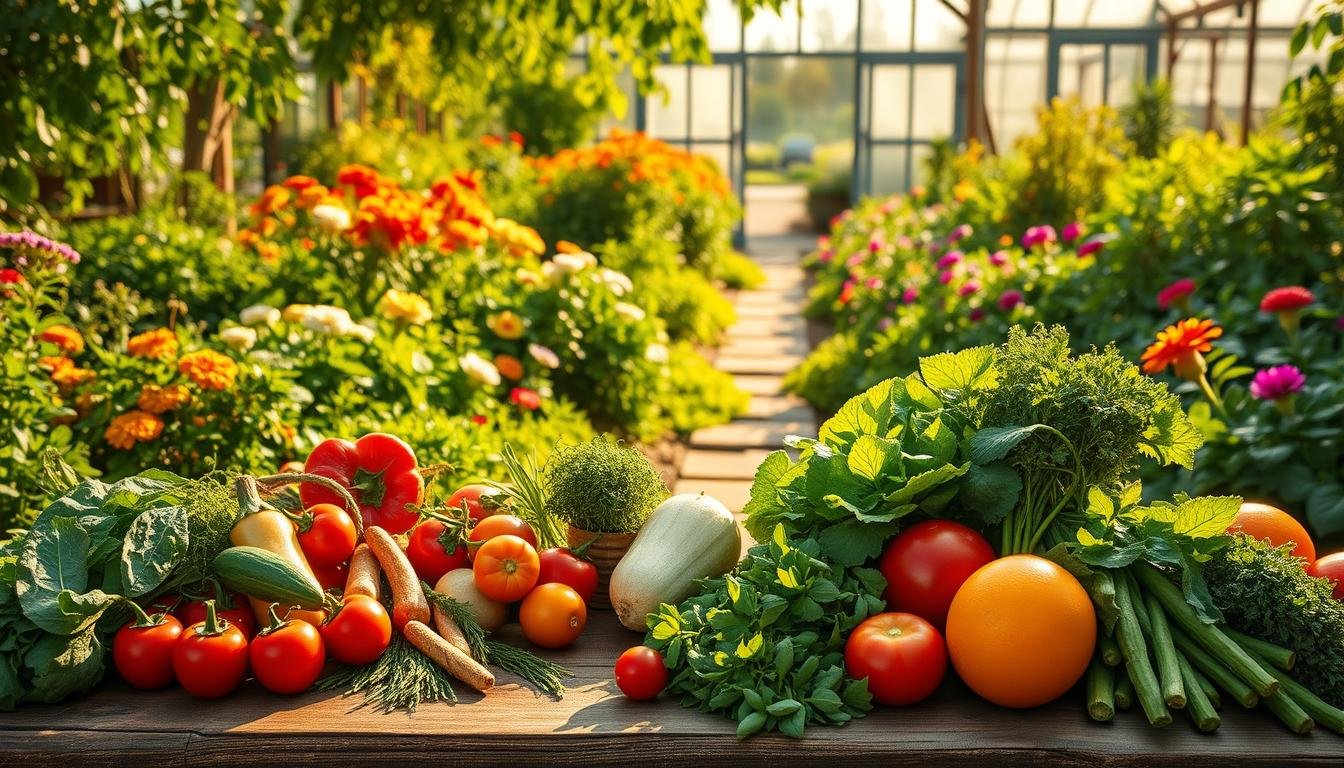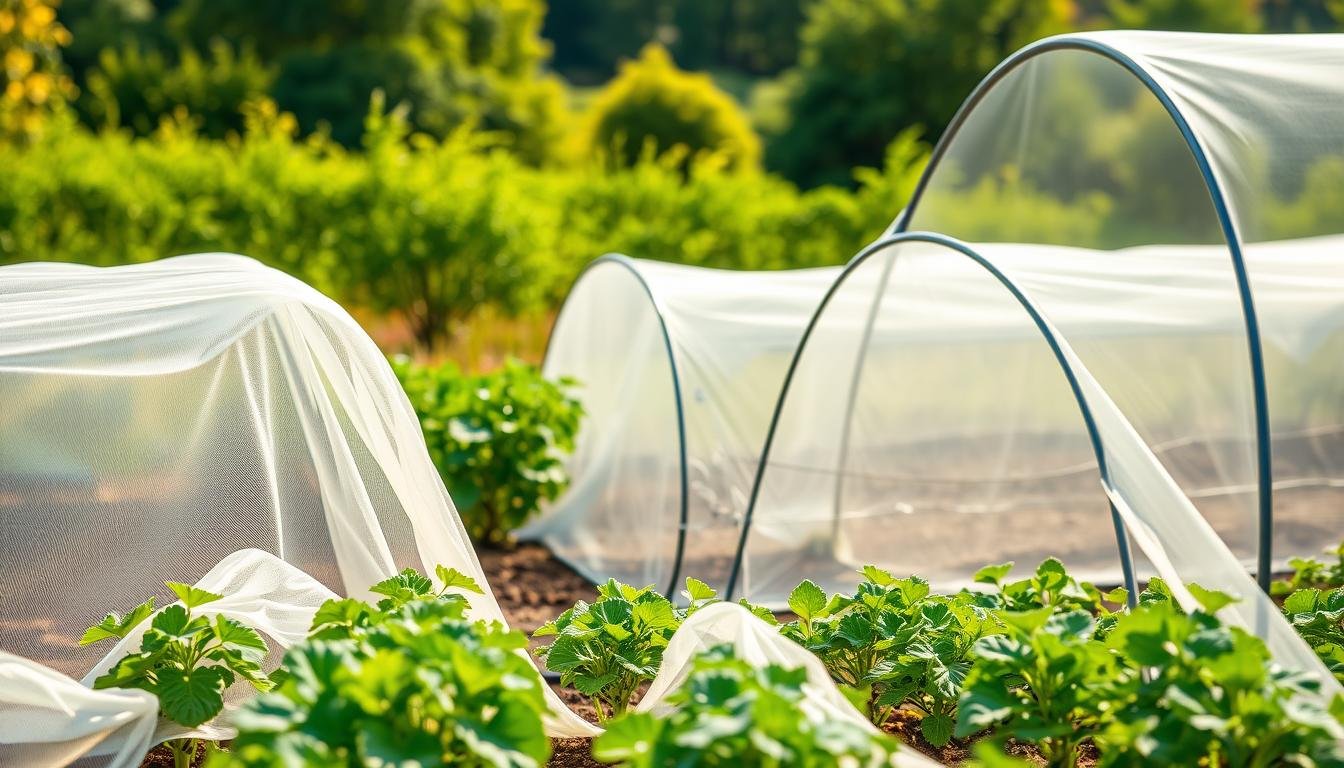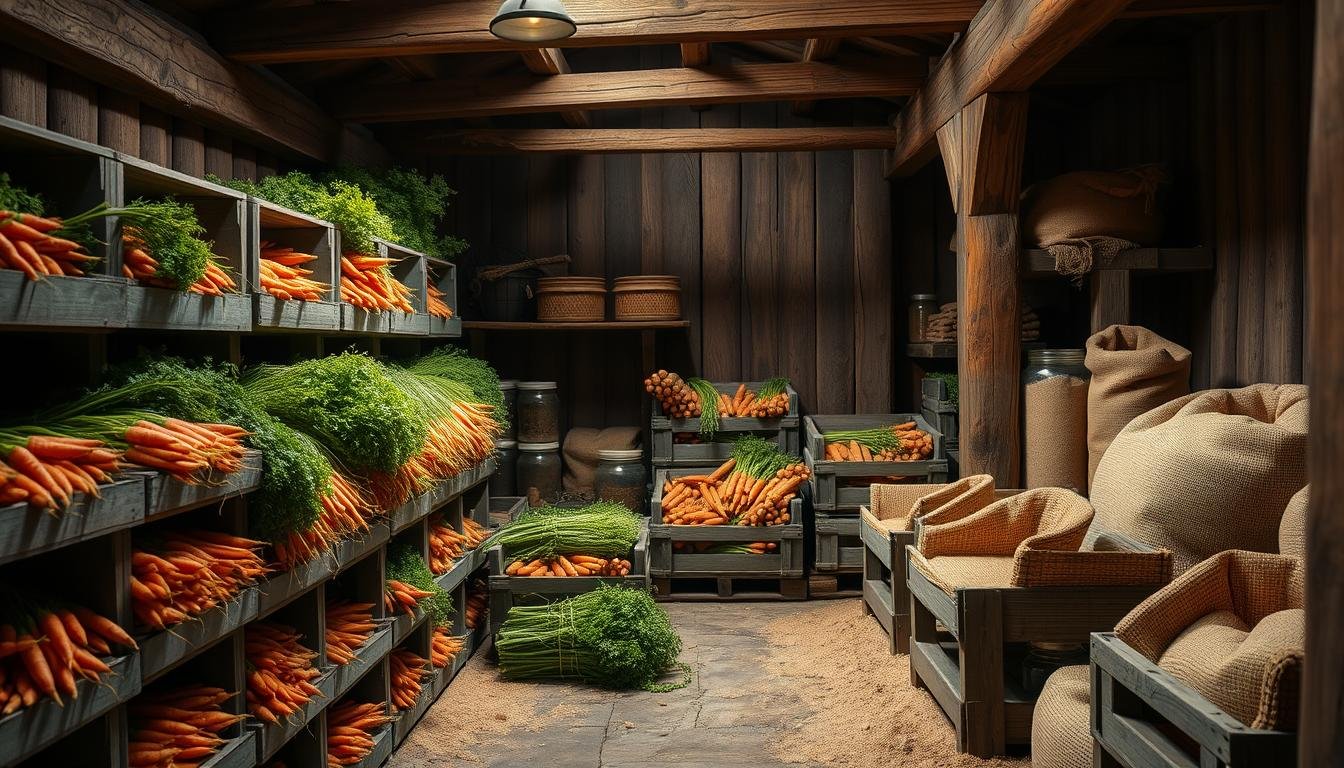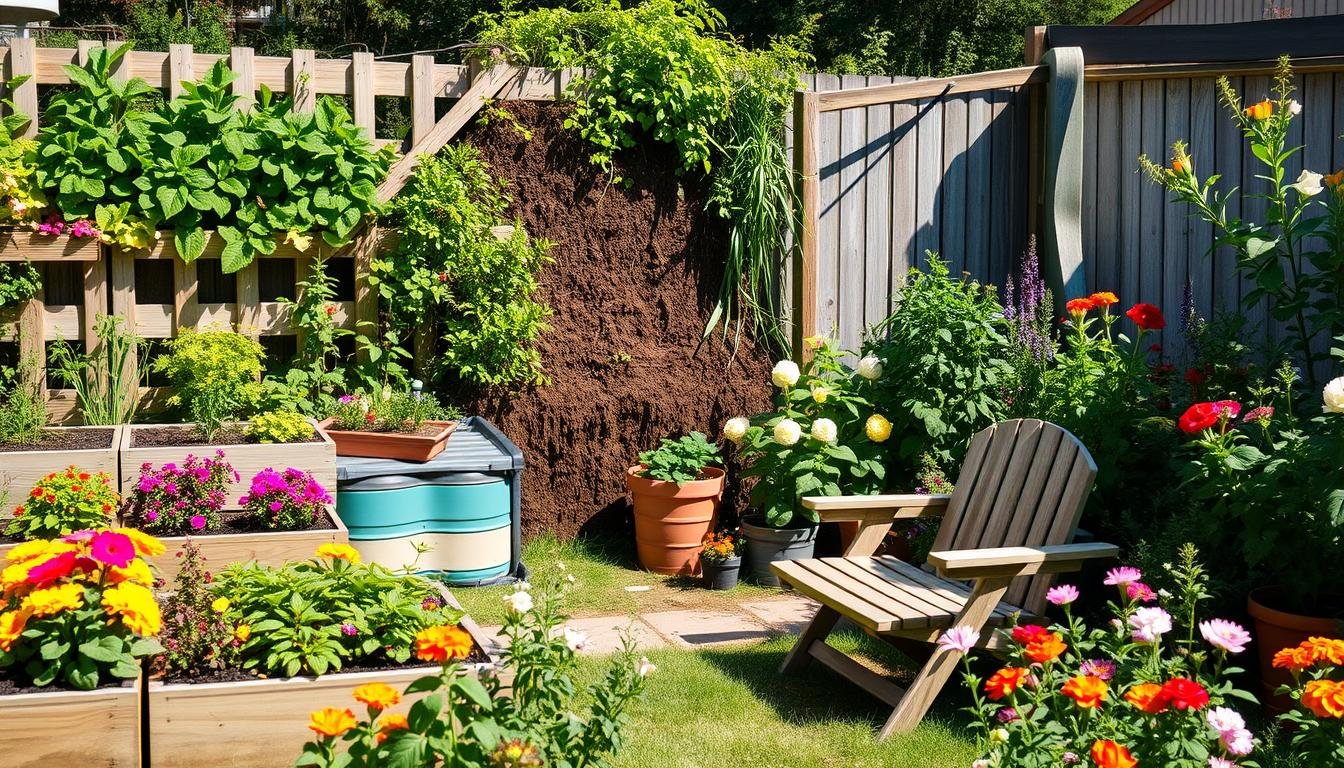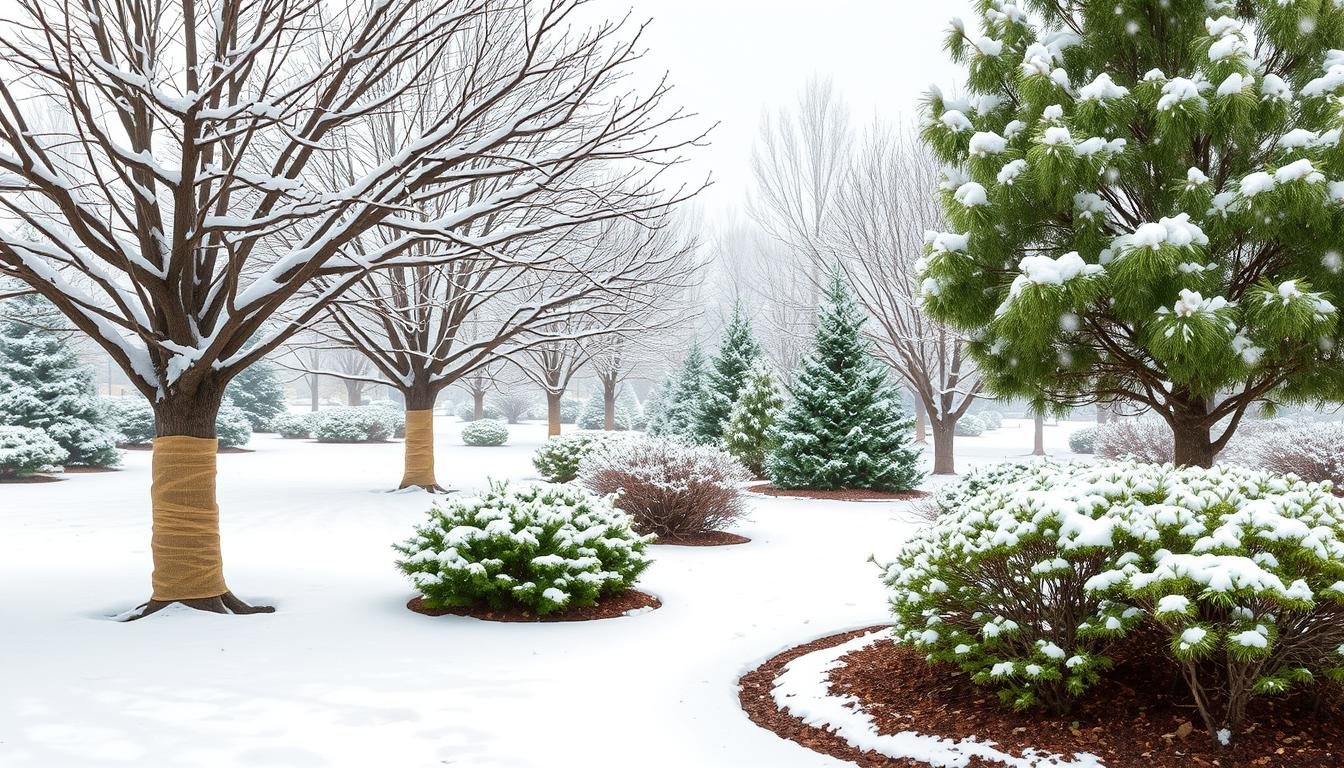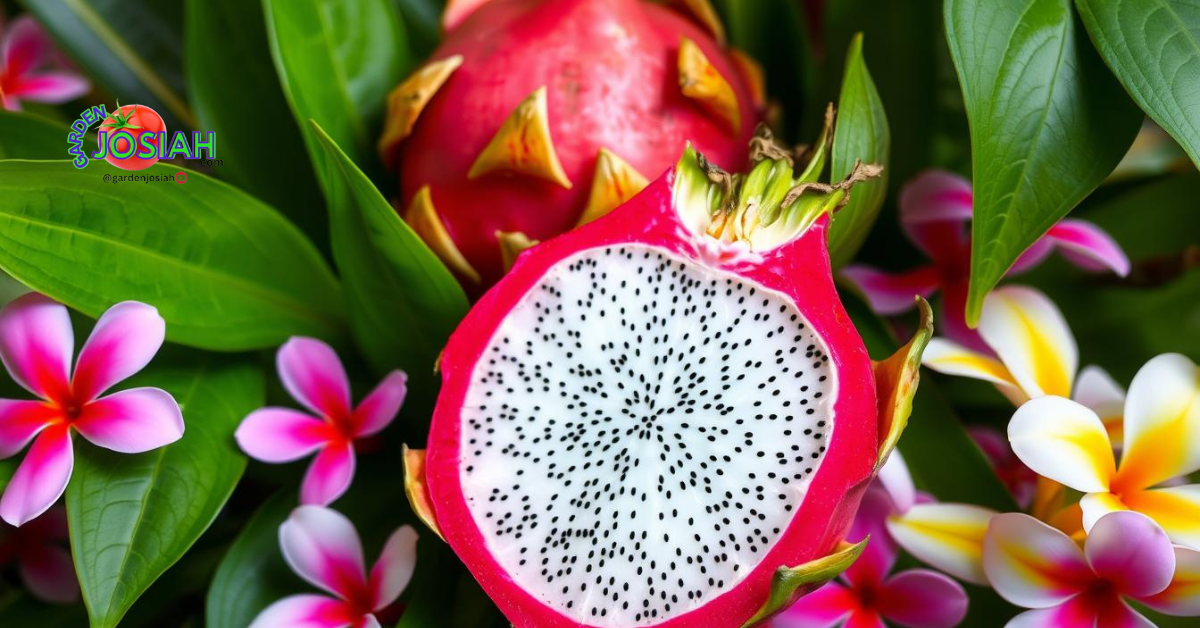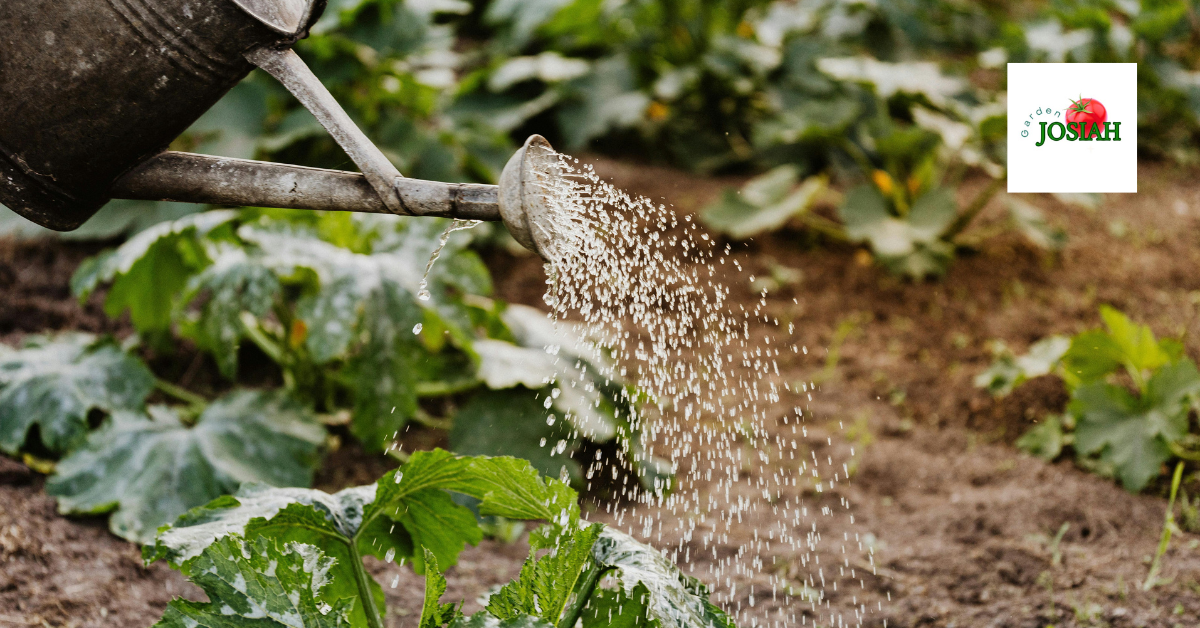Starting a summer garden can feel like solving a puzzle. My first year in Houston, I transplanted Virginia favorites only to watch them wilt. Garden maintenance in summer demands strategies that balance heat, water, and pests. Tips for summer gardening vary widely across U.S. climates, but common challenges unite all gardeners. From morning weeding routines to timing seed starts, success hinges on adapting to seasonal demands. Summer’s intensity tests even seasoned gardeners. Overwatering, underweeding, and neglecting soil health can turn thriving plants into casualties. But with targeted care—like deep watering at 6-inch roots or spacing beets two finger-widths apart—gardens can flourish. Lettuce struggles in Houston’s heat? Start seeds indoors instead. Beetles swarming? Check leaf undersides daily to stop pest outbreaks. Key Takeaways Maintain 1-2 inches of weekly water using a rain gauge to avoid overwatering. Thin beets and carrots to two finger-widths apart for better growth. Weed 30 minutes daily at dawn to control weeds like dandelion, which spread 2,000 seeds yearly. Harvest beans regularly to boost production and prevent pest infestations. Plant tender bulbs like canna and dahlia after frost dates for summer blooms. Understanding Summer Garden Challenges Summer gardening comes with its own set of challenges. To keep your garden in top shape, it’s crucial to understand these hurdles. Plants face extreme heat, unpredictable moisture, and pests that love the warm weather. Heat Stress and Its Effects on Plants High temperatures can damage plants. Look out for wilting leaves, sunscald on fruit, and early blossom drop. Summer gardening tips suggest watering in the morning to help plants absorb more moisture. But, be careful not to overwater. This can lead to fungal diseases that harm 30% of plants. Prune plants during cooler times to avoid stressing them out. Common Summer Garden Problems Summer pests like aphids and flea beetles are a big problem. Weeds such as crabgrass and bindweed also compete with your plants for water. A 10×10 garden needs 62 gallons of water each week. But, watering too much or too little can upset the balance. Here are some tips to tackle these issues: Weeds: Pull them out every 2 days to stop them from spreading seeds Pests: Use row covers for brassicas and handpick large pests Watering: Drip systems are efficient Regional Climate Considerations for US Gardeners Choosing the right plants depends on your region’s climate. Here’s a table with tips for different zones: Region Key Challenges Solutions Southeast Humidity, fungal diseases Improve airflow; use neem oil Southwest Scorching sun, drought Choose native xeriscaping plants Midwest Temperature swings Use shade cloth for tender plants Pacific Northwest Heatwaves, sudden frosts Focus on cool-season crops In hot weather, timing is everything. Water deeply in the early morning. Raised beds and mulch can also help. These are key to a successful summer garden. Essential Tips for Summer Gardening Success Learning tips for summer gardening means knowing what plants need in the heat. Water them deeply in the morning to cut down on evaporation. Make sure the soil is moist 6–8 inches deep. But, too much water can harm plants, so check the soil by stepping on it. If it springs back, wait a bit before watering again. Mulch beds with 2–3 inches of organic material to keep moisture in and weeds out. Adjust soil pH for best plants for summer gardens: carrots do well at 6.0–7.0, and cucumbers like 5.5–7.0. Space squash properly—3–6 feet apart—to improve airflow and prevent disease. Feed your plants with organic vegetable food every month. Harvest beans every 3–5 days to help them grow. Pick eggplants when their skin is smooth and shiny. To keep pests away, attract ladybugs—they eat aphids and mites. Plant heat-lovers like corn (needs 70°F soil) and peppers (65–85°F daytime temps) at the right time. Raise your mower blades to 3 inches to strengthen lawn roots. With consistent care, your garden will thrive without getting tired. Creating a Summer Gardening Checklist Mastering summer gardening checklist tasks is key to a thriving garden during hot weather. Follow this garden maintenance in summer plan to steer clear of common mistakes and boost your garden’s productivity. Early Summer Tasks Apply 2-3 inches of mulch to keep moisture in and weeds out Install trellises for vining crops like cucumbers and tomatoes Plant heat-tolerant veggies: eggplant, peppers, and okra Test soil moisture with a probe before watering Mid-Summer Maintenance Deadhead spent blooms weekly to encourage repeat flowering Water deeply but infrequently: 1 inch per week, adjusted for heat Check for aphids and squash bugs; treat with insecticidal soap Thin apple fruits to 6 inches apart for better fruit size Late Summer Preparation Sow fall crops like broccoli and kale in mid-August Divide overgrown perennials like daylilies and bearded iris Prune fruit trees by removing 25% of canopy for air circulation Begin cleaning garden beds for fall planting rotations Task Early Summer Mid-Summer Late Summer Watering Twice weekly Every 3-4 days Reduce frequency by 30% Pest Control Introduce beneficial insects Apply organic sprays Clean garden debris Planting Heat lovers Succession sowings Cool-season crops Keep track of your progress with a phenology journal. Note bloom times and pest patterns. Adjust your schedule as needed based on local weather for the best results. Selecting the Best Plants for Summer Gardens Summer’s heat is tough on plants. Look for varieties that love the sun and don’t need much water. Angelonia and Lantana are great for keeping your garden bright. Plants with waxy leaves or deep roots save water. Heat-Tolerant Vegetables and Herbs Okra, eggplant, and peppers do well in the heat. Heart to Heart® Caladiums add color and grow in zones 9-11. For herbs, rosemary and basil handle summer sun well. Zahara Zinnias, introduced in 2009, fight off disease and bloom in USDA zones 3-11. Drought-Resistant Flowering Plants Luscious® Lantana (zones 10-11) blooms in red, pink, and yellow without deadheading. Victoria Blue Salvia (zones 8A-10B) grows 18–24 inches tall, attracting pollinators. Firecracker Fern (zones 9A-11B) thrives in heat and salt, winning awards for resilience. Madagascar Periwinkle prefers full sun and acidic soil, thriving in zones 10-11. Native Plants That Thrive in Summer Native plants like Black-Eyed Susan (zones 3A-9B) bloom well without extra water. Bacopa and Coreopsis are good for Midwest gardens.
How Much to Plant for a Year’s Worth of Food
How Much to Plant for a Years Worth of Food Figuring out how much to plant for a year’s food is key for self-sufficiency. You need to think about how much food each person will eat and how much space you have for gardening. Planning carefully is essential, starting with knowing how much to plant. A family of six with a 3,500 square foot garden managed to eat homegrown food for nine months. This shows the importance of planning your garden for a year’s food. When planning a garden for a year, remember the space needed per person. A family of seven needs about 14,000 square feet. This highlights the need for detailed planning in gardening for self-sufficiency. Knowing how much to plant is the first step towards self-sufficiency. Introduction to Food Self-Sufficiency Food self-sufficiency means knowing how to produce and preserve food. With the right space and planning, you can grow enough food for a year. This reduces your need for outside food sources. By calculating your garden needs and knowing how much to plant, you can control your food supply. Key Takeaways Determine the amount of food needed for each person in the household to calculate garden produce for a year. Consider the amount of space available for gardening when planting for food self-sufficiency. Understand how much to plant for a year’s worth of food to achieve food self-sufficiency. Plan for preservation methods, such as canning or freezing, to extend the shelf life of garden produce. Quadruple the number of plants suggested for fresh consumption if canning or preserving is intended, following the general rule for preserving vegetables. Consider the average recommendations for various plants, such as 10 to 20 bean plants per person, to ensure a sufficient harvest. Understanding the Basics of Food Self-Sufficiency Growing enough food for a year starts with understanding food self-sufficiency. You need to know your family’s food needs and how much space you have. It’s also important to know about growing zones and seasons. For example, estimating food crops for a year means looking at your family’s eating habits. You also need to think about how to preserve food. Planning and organization are key to sustainable food production for a year. Knowing your family’s food needs helps you figure out how much to grow. For instance, you can multiply the weekly food items by 52 to find out your yearly needs. To be self-sufficient, you must calculate your growing space and know the growing zones and seasons. This tells you which crops to grow and when to plant them. By planning this way, you can grow enough food for a year and enjoy sustainable food production. Some important things to think about for food self-sufficiency include: Assessing your family’s food needs and eating habits Calculating the available growing space and understanding growing zones and seasons Planning your garden layout to maximize yield and minimize waste By following these steps and thinking about estimating food crops for a year, you can make a successful plan for sustainable food production. You’ll enjoy the benefits of food self-sufficiency. Planning Your Garden Layout for Maximum Yield Creating an annual food gardening plan is key to harvesting enough food for a year. A well-planned garden layout can significantly increase your yield. Start by determining your garden’s size and the crops you wish to grow. Most vegetables need 6 to 8 hours of sunlight daily for best growth. Place tall vegetables at the back, mid-sized ones in the middle, and small plants in the front. This layout makes it easy to access your plants and prevents overcrowding. Using a garden planner can help avoid mistakes and save time. Keeping a garden diary to track your progress and make adjustments is also helpful. When planning your garden, remember crop rotation, soil quality, and companion planting. Crop rotation helps prevent diseases and manage pests. Using products like Miracle-Gro® Garden Soil for Vegetables & Herbs can improve soil quality. Regularly feeding your plants with Miracle-Gro® Shake ‘n Feed® Tomato, Fruit & Vegetable Plant Food ensures they get the nutrients they need. How Much to Plant for a Year’s Worth of Food: A Complete Breakdown Planning a yearly food supply means figuring out how much to plant. You need to think about vegetables, fruits, and grains for your family. A 1/4 acre can grow over half of your family’s food for the year, including meat and grains. Consider your family’s eating habits and how you’ll preserve food. For example, if you plan to can or freeze, you’ll need to plant more. Vegetable Requirements Per Person For a year’s worth of veggies, plant at least 100 square feet per person. You can divide this into specific crops like: Tomatoes: 10-20 plants per person Leafy greens: 20-30 plants per person Root vegetables: 10-20 plants per person Fruit Trees and Berry Bushes Fruit trees and berry bushes give a lot of food but need more space. One fruit tree can give hundreds of pounds of fruit yearly. Berry bushes can have multiple harvests each season. Grain and Legume Calculations Grains and legumes are key for a balanced diet. But they need careful planning and space. Plant at least 100 square feet of these crops per person for a year’s supply. Crop Space Required per Person Yield per Person Wheat 100 sq ft 50-100 lbs Oats 100 sq ft 50-100 lbs Beans 50 sq ft 20-50 lbs Essential Tools and Resources for Year-Round Growing To grow food all year, you need the right tools and resources. Planning for a year’s worth of food requires thinking about climate, soil, and space. Keeping a garden diary helps track progress and plan for the future. A greenhouse is key for growing longer and protecting crops from bad weather. You’ll also need a tractor or tiller for soil prep. Plus, seeds and fertilizers are crucial for healthy crops. Knowledge and expertise are also vital. This includes soil science, crop rotation, and pest control. You can find this through online resources, workshops, and talking to experienced gardeners. With the right tools and knowledge, you can
Why Your Carrots Look Wonky: Causes of Splits, Twists, and Other Deformities
Ever wondered why your carrots might look a bit off? They could have splits, twists, or other weird shapes. These issues can come from many things like the soil, how you water them, pests, and diseases. Knowing what causes these problems is key to growing carrots that look right. Carrots that don’t grow straight can be a problem. But, by spotting the signs early, you can stop these issues. The reasons why carrots might look weird include the soil, how you water them, pests, and diseases. Deformed carrots can be a big headache for gardeners. But, if you understand why they happen, you can avoid them. For example, carrots might split if the soil is too hard or rocky. Fixing these problems can help you grow carrots that are straight and healthy. Key Takeaways Carrot deformities can be caused by soil conditions, watering issues, pests, and diseases. Improper cultivation practices are a common reason for forked and deformed carrots. Split carrots can be a result of compacted or rocky soil. Why your carrots look wonky can be attributed to several factors, including soil conditions and watering issues. Carrot deformities, such as split carrots, can be prevented by addressing the underlying causes. Deformed carrots, including split carrots, are still edible and can be used in soups and stews. Understanding Common Carrot Deformities Carrot deformities can be a big problem for gardeners. They often lead to twisted carrots, misshapen carrots, and other deformed vegetables. Knowing the causes is key to fixing this issue. Carrot deformities can happen for many reasons. These include soil conditions, how you water, and pests or diseases. For instance, carrots grown in hard soil might grow deformed or short. To stop carrot deformities, you need to give them the best growing conditions. This means using soil that drains well, keeping the moisture steady, and fighting pests and diseases. Using organic probiotics like EM-1 can also help. It makes the soil healthier and helps plants grow better. When growing carrots, there are a few important things to remember: Soil temperature: Carrots grow best when the soil is cooler than 25°C. Soil structure: Adding good compost can make the soil better for carrots. It helps with drainage and air. Watering: Keeping the soil moist is key to avoid carrots splitting or cracking. Pest control: Carrot flies are a big problem for many growers, showing how common pest issues are. By following these tips and giving carrots the right conditions, you can avoid deformed vegetables. This way, you’ll have a great harvest of tasty, straight carrots. The Role of Soil Composition in Carrot Formation Soil composition is key for carrot growth. Poor soil can make carrots odd-shaped in your wonky vegetable garden. Healthy carrots need well-draining soil to grow straight. Compacted or rocky soil can harm carrot growth. It can make carrots deformed or stunted. Factors like soil compaction and dense plantings can cause problems. Carrots need at least 12 inches of loose soil to grow straight. Dense plantings and changing moisture levels can also harm carrots. To grow healthy carrots, keep your soil in good shape. Adding compost or EM-1 can help. This makes the soil better for carrots and helps your wonky vegetable garden thrive. Good soil for carrots has many benefits. It reduces deformities and stunts, improves nutrient availability, and boosts yields. Reduced risk of deformities and stunted growth Improved nutrient availability Increased yields and better root development How Water Management Affects Carrot Shape Carrots can grow poorly, like splitting, due to uneven watering. It’s key to manage water well for carrots to grow right. Using the right watering methods, like steady and soft water, can stop carrots from getting deformed. Changes in soil moisture can make carrots split or crack. Keeping the soil moist but not too wet is crucial, mainly when carrots are developing roots. Here are some tips for managing water: Water carrots often, but don’t overdo it to prevent carrot growth issues. Check the soil’s moisture to keep it just right, not too dry or too wet. Don’t water carrots unevenly, as this can cause their roots to fork. By using these tips, gardeners can lower the chance of split carrots and other shape problems. Good water care, along with other gardening habits, can lead to straight, healthy carrots. Other things, like soil type and temperature, can also impact carrot shape. But, with the right water care, gardeners can lessen carrot problems and get a good harvest of tasty carrots. Soil Type Moisture Level Carrot Shape Compacted or clay-like Low Deformed or stunted Well-draining Consistent Healthy and straight Impact of Weather Conditions on Carrot Growth Weather conditions greatly affect carrot growth. Knowing these factors helps gardeners protect their crops. Carrots grow best in temperatures between 60-70°F. Temperatures over 85°F can slow their growth. Summer heat can cause carrots to grow poorly. This might lead to carrot deformities and make you wonder why your carrots look wonky. Extreme weather, like droughts or heavy rain, also affects carrots. Soil drying out for just 1-2 days can lower germination rates. Too much water can cause root rot. To fight these issues, gardeners can use row covers or shade to protect their carrots. Other weather factors also play a role in carrot growth. Carrots need sunny spots to avoid becoming leggy. This happens when they don’t get enough sunlight. By understanding weather’s impact, gardeners can create the best growing conditions. This helps avoid carrot deformities and answers the question of why your carrots look wonky. Some important tips for weather-related carrot growth include: Keep soil moisture consistent to avoid too little or too much water Protect carrots from extreme temperatures and weather Make sure they get enough sunlight to prevent leggy growth By following these tips and understanding weather’s role in carrot growth, gardeners can ensure healthy carrots. This reduces carrot deformities and leads to a successful harvest. Proper Spacing and Thinning Techniques Carrot growth can be greatly affected by spacing and thinning. When carrots are too close, they fight for nutrients and space. This can make them grow deformed and not good to eat. To avoid this, it’s key to use the
Organic Gardening Blog: Tips for a Greener Thumb
Organic Gardening Blog: Tips for a Greener Thumb Growing your own plants at home is more than just a hobby—it’s a lifestyle. Whether you’re nurturing vegetables or planting seeds, the joy of watching your garden thrive is unmatched. This blog is here to guide you with practical tips and the latest news to help you succeed. Gardening has a way of influencing what we eat and how we connect with others. From garlic planting in the fall to pruning tomatoes in the summer, every season brings new opportunities to learn. Trends like these show how passionate gardeners are about their craft. For those just starting or looking to improve, this blog offers valuable advice. You’ll find tips on saving time, choosing the right seeds, and making the most of your space. Let’s grow together and make every year greener than the last. Key Takeaways Gardening impacts food choices and community engagement. Eco-friendly methods are becoming more popular. Seasonal practices like garlic planting are trending. Practical tips help gardeners of all levels succeed. This blog provides the latest news and advice. Embracing Organic Gardening: Getting Started Starting your journey into sustainable growing can be both exciting and rewarding. Whether you’re planting vegetables or nurturing flowers, understanding the basics is key. This guide will walk you through simple steps to create a thriving garden using eco-friendly methods. Understanding Organic Methods Organic growing focuses on natural processes to nurture plants. Instead of synthetic chemicals, it relies on compost, natural fertilizers, and pest control. This approach not only benefits your garden but also supports the environment. One essential practice is seed selection. Choose non-GMO seeds for healthier plants. Another tip is to rotate crops each year to maintain soil health. These small steps make a big difference in the long run. DIY Garden Tips for Beginners For beginners, starting small is the best way to learn. Here are some easy-to-follow tips: Plan your space: Decide what to plant based on sunlight and soil quality. Control weeds naturally: Use mulch or hand-pull weeds to avoid chemicals. Time your planting: Follow seasonal trends, like planting garlic in the fall. Experimenting with DIY projects, like building raised beds or creating compost, can also enhance your garden. These projects are not only fun but also sustainable. Remember, every gardener learns through trial and error. With patience and these tips, you’ll see your garden flourish in no time. Organic Gardening Blog: Community and Content Strategies Connecting with like-minded individuals can transform your gardening experience. A strong community not only shares knowledge but also inspires growth. Whether online or offline, building relationships with fellow enthusiasts enhances your journey. Building a Passionate Gardening Community Creating a thriving community starts with shared goals. Social media platforms are a great way to connect. For example, Facebook groups and Instagram hashtags unite gardeners worldwide. Offline events, like local meetups or workshops, also foster meaningful connections. Feedback from your community is invaluable. It helps you understand what topics resonate most. Recent posts about vegetable care and weed control sparked lively discussions. This engagement directs the creation of relevant content. Leveraging User-Generated Content User-generated content adds authenticity to your narrative. Photos of thriving plants or tips for dealing with bugs enrich the conversation. Encourage your audience to share their stories. This not only builds trust but also inspires others. Digital platforms, including magazines and blogs, play a key role. They amplify voices and spread news about sustainable practices. By integrating user perspectives, you create content that resonates with diverse audiences. Strategy Benefit Social Media Engagement Builds a global network of enthusiasts Offline Events Strengthens local connections User-Generated Content Adds authenticity and trust Community Feedback Guides relevant content creation Here are some actionable tips to create engaging content: Focus on trends: Share seasonal tips, like planting seeds in spring. Encourage participation: Ask followers to share their garden photos. Highlight success stories: Feature community members who’ve overcome challenges. By fostering a passionate community and leveraging their contributions, you can create a lasting impact. Together, we can make every garden a source of pride and joy. Sustainable Garden Practices for Year-Round Success Achieving a thriving garden year-round requires planning and sustainable practices. By focusing on seasonal strategies and eco-friendly methods, you can ensure your plants flourish in every season. Let’s explore how to make your garden a source of pride and productivity all year long. Seasonal Planting and Harvesting Tips Seasonal planting is a cornerstone of a successful garden. In spring, focus on sowing seeds for vegetables like tomatoes and peppers. Summer is ideal for nurturing these plants and adding flowers for color. Fall is perfect for planting garlic and preparing for winter crops. Harvesting at the right time ensures optimal yield and plant health. For example, pick tomatoes when they’re fully ripe but still firm. Leafy greens like spinach should be harvested young for the best flavor. Timing is key to a bountiful garden. Eco-Friendly Pest Control and Soil Health Managing pests and maintaining soil health are essential for a thriving garden. Use natural methods like introducing beneficial insects to control bugs. Companion planting, such as growing marigolds near tomatoes, can deter pests naturally. Healthy soil is the foundation of a productive garden. Add compost regularly to enrich the soil with nutrients. Mulching helps retain moisture and suppress weeds. Crop rotation prevents soil depletion and reduces disease risks. Practice Benefit Seasonal Planting Maximizes plant growth and yield Natural Pest Control Reduces reliance on chemicals Soil Enrichment Improves plant health and productivity Crop Rotation Prevents soil depletion and disease Here are some additional tips for year-round success: Winter Prep: Cover soil with mulch to protect it from frost. Weed Control: Pull weeds by hand or use natural herbicides. Harvest Timing: Pick vegetables at their peak for the best flavor. By adopting these sustainable practices, you can create a garden that thrives in every season. Whether you’re growing vegetables or ornamental plants, these tips will help you achieve lasting success. In-Depth Organic Gardening Strategies and Trends Exploring new strategies in sustainable growing can elevate your garden’s potential. By blending traditional methods with modern innovations, you can create a thriving space for both vegetables and flowers. This section
Row Covers: Essential for Successful Gardening
Row covers are innovative tools for gardening. They protect plants from frost, pests, and too much sun. By using row covers right, you can make your garden better. These tools help your plants grow well and stay healthy. They are great for small gardens and big farms. In this article, we’ll explore row covers. We’ll talk about their types, benefits, and how they can help your garden. Row covers keep plants safe from frost and pests. They also help keep moisture in the garden. There are different types of row covers, each with its own level of protection. Setting up row covers correctly is key to their success. They can also help plants grow longer in spring and fall. You can find good row covers at local garden stores and online. Key Takeaways Row covers provide essential protection for plants against frost and pests. They help retain moisture and maintain humidity levels in the garden. Different types of row covers offer varying light transmission and protection levels. Setting up row covers correctly makes a significant difference in their effectiveness. Row covers can extend growing seasons in both spring and fall. Quality row covers are available at local garden centers and online retailers. Understanding Row Covers and Their Benefits Row covers are key to a successful garden. They protect plants from frost and pests. These sheets, made from garden fabric, keep plants safe during the growing season. They work like a warm coat, keeping soil warm. This helps plants grow better in cooler weather. Lighter covers let in 85% to 95% of sunlight, helping young plants survive late frosts. Thicker covers block more frost, protecting plants like tomatoes and strawberries. They also keep pests away, like aphids and beetles. This means less need for harmful chemicals. Row covers also save water by reducing evaporation. They help plants stay hydrated. Plus, they can make the growing season longer, giving you more time to harvest. It’s important to check on plants under the covers. This prevents overheating and stops diseases or pests. Types of Row Covers Available Knowing about the different row covers can really help your garden grow. These covers protect plants and help them grow. They come in two main types: floating row covers and supported row covers, also known as low tunnels. Floating Row Covers Floating row covers are thin, fabric layers that cover plants. They help keep your garden going by protecting against frost. They can even keep plants safe when it’s as cold as 28 degrees Fahrenheit. These covers let 80% to 90% of sunlight through. This is great for young plants that need light. They also help keep the soil moist, which is good for seedlings. To keep them in place, gardeners use rocks, soil, or sandbags. These covers can last 1-3 years, depending on how often you use them. Supported Row Covers (Low Tunnels) Supported row covers, or low tunnels, have hoops to cover plants. They let more air and sunlight in while keeping frost out. These covers can make it warmer under them, raising the temperature by 5-15 degrees Fahrenheit. They are great for early spring or late fall. They help plants grow longer. The hoops also make it easy to get to your plants and keep animals away. Using both floating and supported row covers can make your garden better. They help keep pests and frost away, leading to a healthy garden. Row Covers: What To Use in the Garden and Why Row covers are key for growing crops well. They protect against pests and frost. They also help plants grow better. Knowing how to use them can really improve your gardening. Pest Exclusion Row covers keep pests like aphids and beetles away. This means less damage to your crops. Sealing the edges to the ground makes them even more effective. Frost Protection Row covers can handle different levels of frost. Lighter ones let in more sunlight but protect less. Heavier ones block more frost but let in less light. Hoop-supported covers are best for keeping plants warm. Cover Type Weight Light Transmission Frost Protection Lightweight 0.55 oz 85% Little to none Medium-weight Approximately 1.5 oz 70% Down to 28°F Heavy-weight Up to 3 oz 60% Down to 24°F Using row covers right can make plants grow faster. They protect against pests and cold. Finding the right balance will make your garden better. Choosing the Right Fabric for Your Row Covers Choosing the right material for row covers is key for plant health and gardening success. Different fabrics offer different levels of protection. Knowing the difference between lightweight and heavyweight covers helps you choose the best for your garden. Lightweight vs. Heavyweight Covers Lightweight covers, under 0.4 oz/sq yd, let in lots of sunlight and air. They’re great for keeping pests away while letting good bugs thrive. For example, Agribon AG-19 lets 85% of sunlight through and protects plants from frost down to 28°F. These covers help plants grow well and germinate fast. Heavyweight covers, over 1 oz/sq yd, keep things warmer. They’re perfect for colder months. Agribon AG-30, for instance, keeps plants warm and protects them from frost down to 26°F. This helps plants grow longer into winter. Insect Mesh and Bird Netting It’s important to pick garden fabric that fights pests. Insect mesh and bird netting keep pests away. They let air and moisture in while stopping insects from reproducing. They also keep birds from eating ripe fruits. When picking garden fabric, think about how much light it lets in, how warm it keeps, and how well it protects against pests. This careful choice lets gardeners adjust their plans for different weather and seasons. How to Set Up Row Covers Effectively Setting up row covers right is key to protecting plants and boosting their growth. It’s important to keep them stable against wind and other weather issues. Using the right anchoring methods and support systems makes row covers work better, helping plants all season long. Anchoring Your Row Covers Keeping row covers in place is vital to stop them from blowing away. There are several anchoring methods you can use:
Store Carrots for 6 Months the Absolute Easiest Way
Store Carrots for 6 Months the Absolute Easiest Way Storing carrots for a long time is easy with a simple method. This way, you can enjoy fresh carrots all year. The easiest method is to use resealable bags with holes for air. This keeps carrots fresh in the fridge for up to six months. Using the right techniques and tools keeps carrots fresh. To preserve carrots at home, store them properly. The easiest way is to use a root cellar or a fridge with the right conditions. Carrot storage tips help keep them fresh and crunchy. Key Takeaways Carrots can last between 4 to 6 months when properly stored in a root cellar or fridge. The absolute easiest way to store carrots for 6 months involves using resealable zip-top storage bags with holes poked in them for ventilation. Carrot storage tips include maintaining 90% to 95% humidity and keeping the storage environment cool. Preserving carrots at home requires proper storage conditions, such as refrigeration at 32°F to 40°F. Regular checks on stored carrots are necessary to remove any that appear close to decay. Effective storage environments for carrots include root cellars, dark basements, and garages. The absolute easiest way to store carrots for 6 months also involves changing water for submerged carrots every 4-5 days. Why Long-Term Carrot Storage Matters Storing carrots for a long time is key to enjoying them all year round. Long-term carrot preservation helps keep a steady supply of fresh carrots. This means you don’t have to buy them as often and waste less food. Using the best methods to store carrots keeps them fresh and full of nutrients for longer. Storing carrots for extended periods also keeps their nutritional value high. Carrots are packed with vitamins and minerals that are important for our health. It’s vital to know how to store carrots well to keep them nutritious. Reduced food waste More fresh carrots all year Keeps nutrients in carrots Saves money by buying in bulk Effective long-term carrot preservation techniques offer many advantages. They let you enjoy carrots for longer while also helping the environment. Storage Method Benefits Refrigeration Maintains freshness, reduces spoilage Freezing Preserves nutritional value, allows for long-term storage Dehydration Reduces storage space, maintains nutritional value Selecting the Right Carrots for Storage Choosing the right carrots is key for preserving carrots freshness. You want them to stay crunchy for a long time. Look for carrots that are firm, straight, and without damage. Stay away from carrots with mold, soft spots, or green shoulders. For the best carrot storage techniques, keep these tips in mind: Choose carrots with a sweet and earthy flavor, as they tend to store better. Opt for carrots with a vibrant orange color, as they are more likely to retain their flavor and texture. Avoid carrots that are too large or too small, as they may not store as well as medium-sized carrots. By picking the right carrots and using the right carrot storage techniques, you can enjoy them for up to six months. Store them in a cool, dark place with good air flow. Use resealable bags with holes for ventilation. This keeps the humidity right, like a root cellar. Remember, the secret to keeping carrots fresh is to choose the right ones and store them properly. This way, you can enjoy your carrots longer while preserving carrots freshness. Essential Tools and Materials Needed Storing carrots for a long time needs the right tools and materials. A 6-month carrot storage solution requires careful planning. You’ll need containers and materials that keep humidity and temperature steady. You’ll need resealable bags with holes for air and a fridge to keep carrots cool. A harvest basket can also help in storing and moving carrots. Storage Containers and Materials The container you choose affects carrot freshness and quality. Here are some good options: Resealable zip-top storage bags Plastic containers with lids Wooden crates or boxes Environmental Control Equipment Equipment like a fridge or root cellar is key for storing carrots. It helps control temperature and humidity. This equipment also ensures good air flow. Regulate temperature Control humidity Maintain air circulation With the right tools and materials, you can store carrots for 6 months. Always check on your carrots to keep them fresh. Adjust your storage solution as needed. Storage Method Storage Life Refrigeration 2-3 months Root Cellar 5-6 months Freezing Up to 1 year The Absolute Easiest Way to Store Carrots for 6 Months Keeping carrots fresh for a long time can be tricky. But, with the right steps, you can enjoy them all year. The absolute easiest way to store carrots for 6 months is by using zip-top bags with holes for air. This keeps carrots fresh and crunchy for up to six months. To do this, poke about 20 holes in each bag. Aim for a humidity of 90% to 95%. Each bag can hold about 4 pounds of carrots. Here are some carrot storage tips to remember: Store carrots in the fridge at a temperature between 32°F and 40°F. Check stored carrots regularly and remove any showing signs of decay. Use damaged or cracked carrots first and store them separately to prevent spoilage in the main supply. By following these tips, you can enjoy fresh carrots for months. The trick is to keep the right humidity and store them in a cool, dark spot. With the absolute easiest way to store carrots for 6 months, you can avoid soggy carrots. Say hello to a steady supply of fresh and delicious carrots all year. Storage Method Temperature Humidity Refrigerator 32°F – 40°F 90% – 95% Optimal Storage Conditions and Environment Storing carrots for winter needs the right conditions. The best temperature is between 32°F and 40°F. This is the same as for beets and cabbages. Keeping humidity at 90-95% is also key for carrots and other roots. Good air flow is vital to stop moisture buildup. This can cause mold and spoilage. Keeping your carrots in the best conditions helps them stay fresh and crunchy longer. This is crucial when you’re storing them for months. Some important things to keep in mind for storing carrots include: Keep
5 Ways to Improve your Garden in 2025
5 Ways to Improve your Garden in 2025 Improving your garden in 2025 means using the newest trends and methods. These help make your garden more diverse, sustainable, and enjoyable. Many people are now looking for ways to make their gardens better. By following these 5 Ways, you can make your garden a beautiful spot that also helps the environment. More gardeners are choosing plants that attract pollinators. There’s been a big increase in using native plants, which are good for biodiversity. Also, 25% more people are picking water-efficient plants to save water. These tips and hacks can make your garden sustainable and full of life. Key Takeaways Embracing sustainable gardening practices is essential for a healthy garden. Using water-efficient plants can help reduce water consumption. Creating a pollinator-friendly garden can support local biodiversity. Regular soil testing can ensure appropriate nutrient management. Implementing garden improvement tips and gardening hacks can enhance your outdoor living experience. Embrace Sustainable Gardening Practices Sustainable gardening is key to a healthy garden. It helps the environment and makes your outdoor space better. Composting is a big part of it, turning waste into nutrient-rich soil for plants. Composting cuts down household waste, with about 30% being compostable. Using native plants boosts biodiversity and cuts down on upkeep. Water-saving methods like rainwater harvesting and drip irrigation also help reduce water use. Reduced waste and environmental impact Improved soil health and fertility Increased biodiversity and support for local wildlife ecosystems Conservation of water and reduction of water consumption These practices make your garden sustainable and eco-friendly. They benefit you and the environment, enhancing your outdoor space. Utilize Smart Gardening Technologies Smart gardening technologies are changing how we garden. They make gardening more efficient, productive, and fun. These technologies give us real-time data on soil moisture, pH, and light. This is key for plants to grow well. Effective tools include smart irrigation systems, soil meters, and garden planning apps. They help us water plants just right, save water, and balance our gardens. For instance, smart irrigation systems adjust watering based on weather and soil moisture. This ensures plants get the right amount of water. Garden planning apps also offer advice on where to plant, how to prepare soil, and manage pests. They help us garden more efficiently and sustainably. By using these gardening hacks, we can improve our outdoor space enhancement and make our gardens more eco-friendly. Some popular tools include: Smart irrigation systems Soil meters Garden planning apps Using these smart gardening tools makes gardening more efficient and enjoyable. Whether you’re new to gardening or have been doing it for years, these eco-friendly garden ideas can help. They make your garden more sustainable and thriving. Smart Gardening Tool Benefits Smart Irrigation Systems Automatically adjust watering schedules, reduce water waste Soil Meters Provide real-time data on soil moisture, pH, and light exposure Garden Planning Apps Offer personalized advice on plant placement, soil preparation, and pest management Enhance Soil Quality for Better Growth Soil quality is key for a healthy garden. It affects how well plants grow. Using organic fertilizers and compost helps make the soil better. Knowing the soil’s pH is also important. Most plants do best in slightly acidic to neutral soil. The ideal pH is about 6.8 for the best growth. Adding compost or well-rotted manure to the soil is a good idea. It makes the soil better for plants. Testing the soil regularly helps know what nutrients it needs and if the pH is right. By following these tips, gardeners can make their gardens better for the environment and themselves. Improved soil structure and fertility Increased plant growth and productivity Reduced soil erosion and water pollution Support for beneficial microorganisms and soil biota Using eco-friendly garden ideas and sustainable practices helps create a healthy garden. It’s good for the environment and the gardener. Soil Component Percentage Mineral particles 45% Air 25% Water 25% Organic matter 5% Create a Wildlife-Friendly Environment By using eco-friendly garden ideas, you can make your outdoor space a haven for wildlife. This not only helps biodiversity but also makes your garden more beautiful. Start by adding birdhouses and feeders. They attract birds, giving them food and a place to live. Using native plants is key to a wildlife-friendly garden. They support 90% of the food web in many ecosystems. Native plants also help prevent soil erosion and improve soil health. They cut down the need for harmful chemicals by over 50%, making your garden healthier. Benefits of Pollinator Gardens Pollinator gardens help support bees, butterflies, and other pollinators. They offer nectar and pollen, making your garden a welcoming place for wildlife. Some benefits include: Local wildlife visits can increase by up to 70% with open water sources Native bees can boost fruit and veg yields by about 30% in gardens Pollinator numbers have dropped by about 30% in 10 years due to habitat loss and climate change Adopting sustainable gardening practices can greatly benefit your local environment. Use native plants, provide water, and reduce chemical use. This way, you create a space that supports biodiversity and ecosystem health. Incorporate Vertical Gardening Techniques Vertical gardening is a smart way to make your outdoor space better. It’s efficient and good for the planet. Using trellises and wall-mounted planters can boost your garden’s output while saving space. It’s perfect for small gardens or city areas where space is tight. Vertical gardening has many perks. It saves space, improves air quality, and cuts down on upkeep. Plants grown up high are less likely to get sick and need less water. This makes them a top choice for green gardens. To start vertical gardening, pick plants that grow well up high, like succulents, herbs, or vines. Native plants are a good choice because they use half as much water as others. They also handle local weather better. With the right plants and methods, you can make a beautiful, useful vertical garden. It’s great for making your outdoor area more attractive and functional. Some top picks for vertical gardening are: Trellises: Great for climbing plants like beans and cucumbers Wall-mounted planters: Perfect for herbs
6 Best Ways to Protect Trees and Shrubs in Winter
6 Best Ways to Protect Trees and Shrubs in Winter Winter can be tough on trees and shrubs. Harsh weather, pests, and diseases are big threats. To fight these, using good winter tree care is key. This includes tips for protecting your plants, like watering, mulching, and using barriers. These methods help keep your trees and shrubs safe from cold, wind, and other winter dangers. Tips like wrapping young trees and using sprays can prevent damage. With the right care, your plants can survive even the toughest winters. Key Takeaways Winter tree care is critical for protecting trees and shrubs from harsh weather conditions and pests. Tree protection tips, such as proper watering and mulching, can help mitigate winter-related risks. The 6 best ways to protect trees and shrubs in winter involve a combination of techniques, including the use of protective barriers and anti-desiccant sprays. Young trees and thin-barked species require special care during the winter months to prevent damage from sunscald and frost cracks. Effective winter tree care can help ensure the long-term health and longevity of your landscape. By adopting the right winter tree care strategies, you can help your trees and shrubs thrive even in challenging winter conditions. Understanding Winter Threats to Your Landscape Winter can harm your landscape in many ways. It can cause frost damage, snow and ice loads, and winter desiccation problems. It’s important to take care of your plants during this time. Knowing these threats helps you protect your shrubs and trees. Some major winter threats include: Frost damage, which can harm trees and shrubs Snow and ice loads, which can break branches and topple trees Winter desiccation problems, which can kill plants due to lack of moisture Every plant has its own needs during winter. For example, evergreen plants can get winter burn, and young trees are more at risk of frost heaving. By understanding these risks, you can protect your plants and keep your landscape healthy. Proper care can prevent winter damage. Techniques like mulching, watering, and pruning can help. By being proactive, you can safeguard your landscape from winter’s dangers. Winter Threat Effect on Landscape Frost Damage Can cause significant harm to trees and shrubs Snow and Ice Loads Can break branches and topple entire trees Winter Desiccation Problems Can lead to the death of plants due to lack of moisture Timing Your Winter Protection Strategy Keeping trees safe from frost is key in winter. Choosing the right plants for your area helps a lot. Experts say picking the right species is the best way to keep trees alive. Knowing what plants need and acting early can save them from frost and dryness. Well-watered soil keeps heat better than dry soil. This helps plants stay warm. Mulch, like bark or leaves, keeps soil warm and stops plants from moving up and down with the weather. To keep plants healthy in winter, mulching, watering, and protecting from frost are important. Here are some tips: Mulching with 2-4 inches of organic material to reduce soil temperature fluctuations Watering thoroughly in October until the ground freezes Delaying pruning until mid-late spring to allow buds to recover and fill in damaged areas By using these methods and understanding how to protect trees from frost, you can keep your plants healthy all winter. This ensures they stay strong and healthy. Essential Materials for Winter Tree Protection For winter tree care, the right materials are key. You’ll need things like burlap or tree guards to protect from wind and frost. Mulch, like wood chips or compost, keeps roots warm and stable. Support stakes and ties help keep trees and shrubs safe and upright. To cover trees well, use 3- to 4-inches of organic mulch around their roots. This acts as insulation, keeping roots safe from cold. Burlap windbreaks also help, especially for evergreens, by stopping sun and wind damage. Protective wrapping options (burlap or tree guards) Mulching materials (wood chips or compost) Support stakes and ties Material Purpose Protective wrapping options Shield plants from harsh winds and frost Mulching materials Insulate roots and moderate soil temperature Support stakes and ties Provide additional stability and protection Using these materials helps your trees and shrubs stay healthy through winter. They protect against harsh weather and support growth. 6 Best Ways to Protect Trees and Shrubs in Winter: Expert Methods Winter tree care and tree protection tips are key to keeping your plants healthy. Mulching is a top method, as it keeps moisture in and soil temperature stable. Evergreens like boxwoods, rhododendrons, and arborvitae need mulch to avoid drying out. Anti-desiccant sprays are also vital. They protect plants from cold, dry winds. You can spray these on the leaves of plants that are more vulnerable. Also, using barriers like burlap or snow fencing can protect plants from heavy snow and strong winds. It’s important to water plants in winter, but don’t overdo it. Too much water can cause root rot. By using these expert tips, you can keep your plants healthy and thriving all winter. Adding a layer of mulch around the base of plants to retain moisture and regulate soil temperature Using anti-desiccant sprays to protect plants from cold, dry winds Installing protective barriers, such as burlap or snow fencing, to shield plants from heavy snow loads and harsh winds Implementing winter watering strategies to provide plants with the moisture they need without overwatering Method Benefits Mulching Retains moisture, regulates soil temperature Anti-desiccant sprays Protects plants from cold, dry winds Protective barriers Shields plants from heavy snow loads and harsh winds Winter watering strategies Provides plants with necessary moisture without overwatering Special Care for Young and Vulnerable Plants Young, thin-barked trees like beeches, maples, and fruit trees are at risk of sunscald in winter. This can cause serious damage. To protect them, using tree guards or wraps is a good idea. Winter shrub care is key for these plants, and extra steps are needed to keep them alive. For winter tree covering, consider using fencing around trees and shrubs. The fence should be 24 to 36 inches tall to keep rabbits
Pitaya Superfood: Explore the Incredible Health Advantages
Pitaya Superfood: Explore the Incredible Health Advantages Pitaya, also known as dragon fruit, is a tropical fruit loved worldwide. It’s not just tasty but also full of nutrients and healthy fibers. Its bright red skin and sweet pulp offer vitamins, minerals, and lots of fiber, making it a nutritious choice. In a one-cup serving of dragon fruit, you get 103 calories, 0.6g of protein, and 0.2g of fat. It has 27.4g of carbs, 5.6g of fiber, and important vitamins and minerals. This makes pitaya a great pick for those wanting to eat healthy and manage their weight. Pitaya is packed with vitamin C, which boosts your immune system and helps your skin. It also has vitamin B for energy and vitamin E as an antioxidant. These vitamins and minerals make pitaya a nutritious choice, offering many health benefits. Key Takeaways Pitaya is a nutritious and healthy food option, rich in vitamins and minerals, and low in calories. Dietary fiber in pitaya can help promote digestive health and support healthy blood sugar levels. Pitaya is a good source of iron, essential for transporting oxygen throughout the body, and beneficial for those with low iron levels. The vitamin C and carotenoids in pitaya may boost the immune system and protect white blood cells from damage. Pitaya offers more magnesium than most fruits, contributing to over 300 enzyme systems in the body and potentially reducing the risk of heart disease, diabetes, and stroke. Pitaya’s antioxidant properties help reduce inflammation and oxidative stress, potentially lowering the risk of chronic diseases. What Makes Pitaya a Superfood Powerhouse Pitaya, also known as pitahaya, is a exotic fruit from the dragon fruit family. It comes from tropical areas in Central and South America, and Southeast Asia. This tropical fruit is loved worldwide for its special traits and health benefits. Pitaya is packed with vitamins, minerals, and antioxidants. It’s a great source of vitamin C, magnesium, and iron. With just 60 calories per serving, it’s also low in calories but high in fiber and water. This makes it perfect for those watching their weight. Understanding the Dragon Fruit Family Pitaya belongs to the dragon fruit family. This family includes fruits known for their bright colors and unique tastes. These fruits are found in the tropics of the Americas and Asia, and are widely grown and eaten there. Nutritional Profile Overview Pitaya’s nutritional profile is impressive. A single serving gives you: 20.5mg of vitamin C 50 IU of vitamin A 0.5mg of vitamin E 8.8mg of calcium 0.65mg of iron 102.5mg of potassium Global Origins and Varieties Pitaya comes from the tropics of Central and South America, and Southeast Asia. There are many varieties, like red, yellow, and purple, each with its own taste and texture. Essential Nutrients Found in Pitaya Pitaya is a nutritious fruit with many health benefits. It has a good mix of nutrients. A one-cup serving has about 103 calories, 0.6 grams of protein, and 0.2 grams of fat. It also has 27.4 grams of carbohydrates and 5.6 grams of fiber. The fruit is rich in iron and magnesium, and vitamins C and E. These nutrients help support the immune system, digestive health, and may help control blood sugar. Some of the key nutrients found in pitaya include: Calories: 103 per 1-cup serving Fiber: 5.6 grams per 1-cup serving Vitamin C: 34% of the Daily Value (DV) per 1-cup serving Iron: 10% of the DV per 1-cup serving Magnesium: 7% of the DV per 1-cup serving Pitaya is a great addition to a healthy diet. It offers essential vitamins, minerals, and fiber. Its health benefits make it a smart choice for boosting overall health. The Science-Backed Benefits of Dragon Fruit Dragon fruit is packed with nutrients and offers many health benefits. It has antioxidants like vitamin C and carotenoids. These help fight off free radicals and prevent cell damage and inflammation. To get the most out of dragon fruit, it’s important to know how to eat pitaya and add it to your meals. Dragon fruit is very nutritious. A 100g serving has 60 calories, 1.18g of protein, and 2.9g of dietary fiber. Its seeds are rich in omega-3 and omega-9 fatty acids, which are good for your heart. The health benefits of dragon fruit are supported by science. Studies show it can help prevent conditions like gout and arthritis. Some of the key benefits of dragon fruit include: Antioxidant properties Digestive health benefits Immune system support Blood sugar management A 2022 study found that eating dragon fruit for a short time improved blood flow and artery health in healthy people. This could help protect against heart disease. With its many health benefits and tasty flavor, dragon fruit is a great choice for a healthy diet. Nutrient Value per 100g serving Calories 60 Protein 1.18g Dietary fiber 2.9g Selecting and Storing Your Pitaya Enjoying pitaya, also known as tropical fruit, requires careful selection and storage. Look for a bright red color and a soft but not mushy texture. This ensures you get the best taste and health benefits. Ripeness Indicators Pitaya is a delicate fruit. Its ripeness is shown by its color and texture. A ripe pitaya has a bright red or yellow skin and is slightly soft. If it’s too green or too mushy, it’s not ripe yet or is overripe. Storage Best Practices To store pitaya, keep it at room temperature until ripe. Then, refrigerate it to extend its life. You can also store it in a sealed container in the fridge for up to 5 days. Keep it away from sunlight and heat. Discovering how to eat pitaya is fun. You can slice it for salads, blend it into smoothies, or enjoy it as a snack. Its unique taste and health benefits make it a great diet addition. Shelf Life Guidelines Storage Method Shelf Life Room Temperature 2-3 days Refrigerator 5 days Freezer 3 months By following these storage tips and learning how to eat pitaya, you can enjoy it all year. Experience its many health benefits. Creative Ways to Enjoy Dragon Fruit Dragon fruit, also known as pitaya, is a versatile fruit. It can be enjoyed in many ways, offering health benefits. You can add it to salads, smoothies, and yogurt, or just
Top 5 Water-Saving Irrigation Techniques for Gardens
Did you know up to 50% of outdoor water use is wasted? This is because of bad watering habits. To save water, gardeners can use smart irrigation methods. This makes gardens more eco-friendly and sustainable. There are many ways to make your garden water-efficient. You can use plants that don’t need much water or set up drip irrigation systems. In this article, we’ll look at the top five ways to save water in your garden. These methods can make your outdoor space greener and more responsible. Key Takeaways Inefficient watering accounts for up to 50% of outdoor water waste Drip irrigation systems can deliver water directly to plant roots, reducing evaporation and runoff Drought-tolerant plants require significantly less water, particularly in hotter climates Healthy, organic-rich soil retains more moisture, reducing the need for frequent watering Proper watering techniques, such as deep, infrequent irrigation, can optimize water usage in gardens Understanding Water Conservation in Modern Gardening Water conservation is key in modern gardening due to climate change. It brings more droughts and water scarcity. Gardeners help local wildlife and preserve native plants while keeping their gardens beautiful. The environmental impact of garden water use is big. Gardens can use a lot of water. The Environmental Impact of Garden Water Usage Studies show each American uses about 82 gallons of water daily at home. A lot of this is for gardening. This high use can harm the environment, especially in areas with little water. Using drip irrigation and soaker hoses can save a lot of water. Benefits of Water-Efficient Garden Systems Water-efficient garden systems have many benefits. Rainwater barrels can cut gardening water use by 40-50%. Drip irrigation systems can save up to 90% of water compared to sprinklers. Xeriscaping and mulching help gardens need less water. They also lower water bills and make gardens more resilient. Current Challenges in Garden Water Management Even with the benefits, there are challenges in using water-efficient systems. Gardeners must adjust to climate changes. They need to balance their garden’s water needs with saving water. Using new tech, like smart irrigation, can help. It adjusts watering based on soil moisture. This ensures water is used wisely. Top 5 Water-Saving Irrigation Techniques for Eco-Friendly Gardens Water conservation in gardens is key for sustainable gardening. By using these water-saving methods, gardeners can lessen their environmental footprint. They can also grow beautiful, water-efficient gardens. Drip Irrigation: This method uses up to 80% less water than traditional overhead watering. It delivers water slowly to the soil, reducing evaporation. This ensures plants get just the right amount of moisture. Gray Water Systems: Using water from baths, sinks, or washing machines can greatly reduce freshwater use. These systems cost between $100-$300 for the necessary valves. They offer a green way to water your garden. Water Harvesting and Catchment Systems: Rain barrels can collect rainwater from roofs, providing a self-sufficient water source. Costs vary from $50-$500+ based on size and number. One inch of rain on a 1,000 square foot roof can yield up to 625 gallons. Mulching Practices: A 6-8″ layer of organic mulch, like straw ($15 per 40lb bale), keeps soil moist. It also cuts down on evaporation and weeds. This can reduce water needs by up to 50%. Smart Watering Techniques: Watering in the morning and focusing on the root zone are smart moves. Using efficient tools like soaker hoses and drip lines can deliver up to 90% of water to plants. This is much better than sprinklers, which only use 40-50%. By using these water-saving methods, gardeners can make their gardens eco-friendly and drought-tolerant. These gardens will thrive while saving precious water. Conclusion Using water-saving irrigation techniques is key for eco-friendly gardens. These methods save water and help plants grow better. They also cut down on garden upkeep. Techniques like drip irrigation and rainwater harvesting are great. Mulching and smart watering also help. These methods let gardeners use less water while keeping their gardens looking good. These methods help with water scarcity and climate change. Using advanced sprinklers and weather-based scheduling saves water. Choosing drought-resistant plants and catching rainwater also helps. By using these water-saving strategies, gardeners can have beautiful gardens. These gardens save water, lower utility bills, and help the planet. Gardening in a water-saving way is good for the environment and sets a positive example. FAQ What are the top water-saving irrigation techniques for eco-friendly gardens? The top 5 water-saving techniques for eco-friendly gardens are: 1) Drip Irrigation, 2) Gray Water Systems, 3) Water Harvesting and Catchment Systems, 4) Mulching Practices, and 5) Smart Watering Techniques. What is the environmental impact of garden water usage? Garden water usage has a big environmental impact. Gardens use a lot of water. But, using water-efficient systems can help. This reduces water bills, makes gardens more resilient, and helps local ecosystems. What are the benefits of water-efficient garden systems? Water-efficient garden systems have many benefits. They lower water bills and make gardens more resilient. They also support local ecosystems. These systems help gardens face water scarcity and climate change, making gardening more sustainable. What are the current challenges in garden water management? Garden water management faces several challenges. These include adapting to climate changes and balancing water needs with conservation. Gardeners play a key role in supporting local wildlife and preserving native plants while keeping their gardens. Source Links How to reduce water waste in your yard – 5 water-saving solutions for greener summer gardening Eight Steps to a Water-Wise Garden | Gardener’s Supply 9 Tips to Create a Sustainable Water Efficient Home Garden in Tampa, FL Low-Maintenance Garden Design and Water Conservation Tips for Sustainable Landscapes” Water Conservation: Essential Strategies for Sustainable Living – Water & Wastewater Tips for Collecting Rainwater for Your Garden Eight Steps to a Water-Wise Garden | Gardener’s Supply 10 Essential Tips to Save Water for Your Lawn & Garden Water Conservation Strategies For Summer | Mansfield


